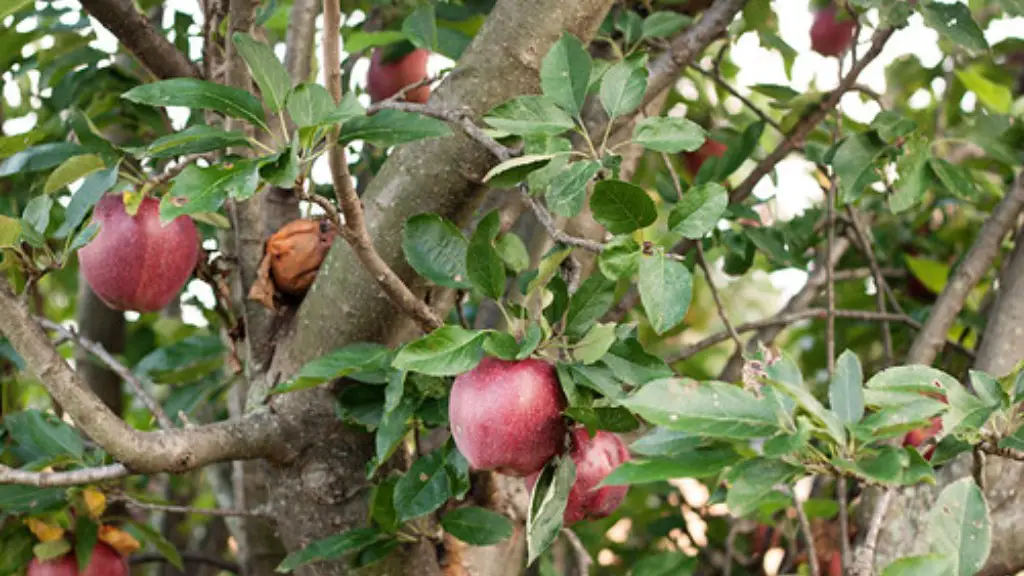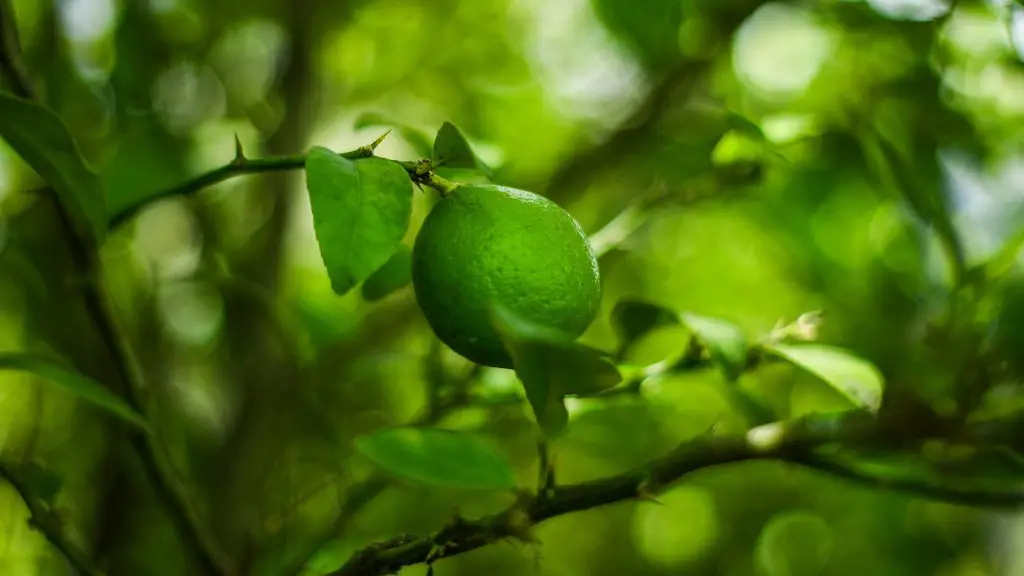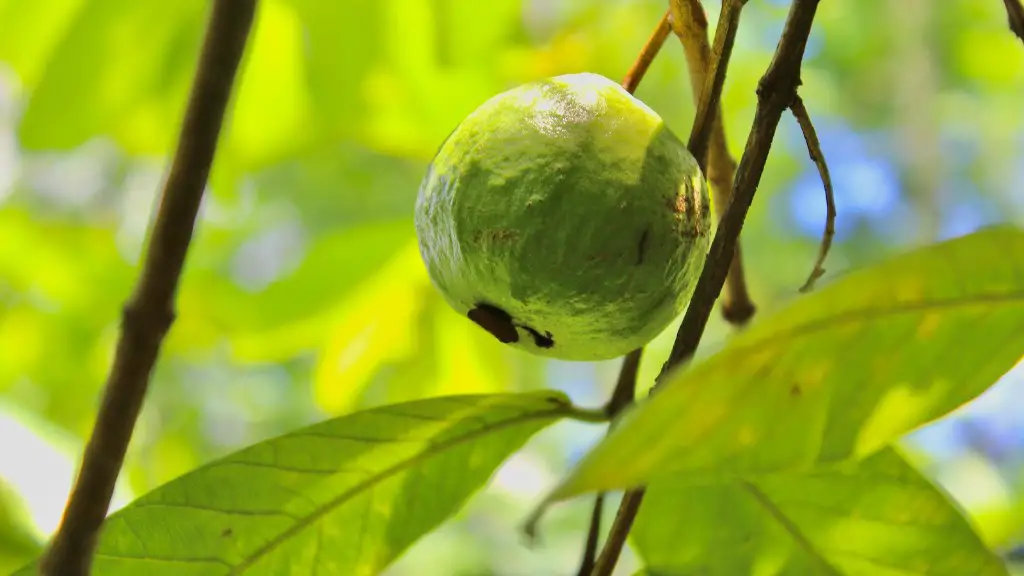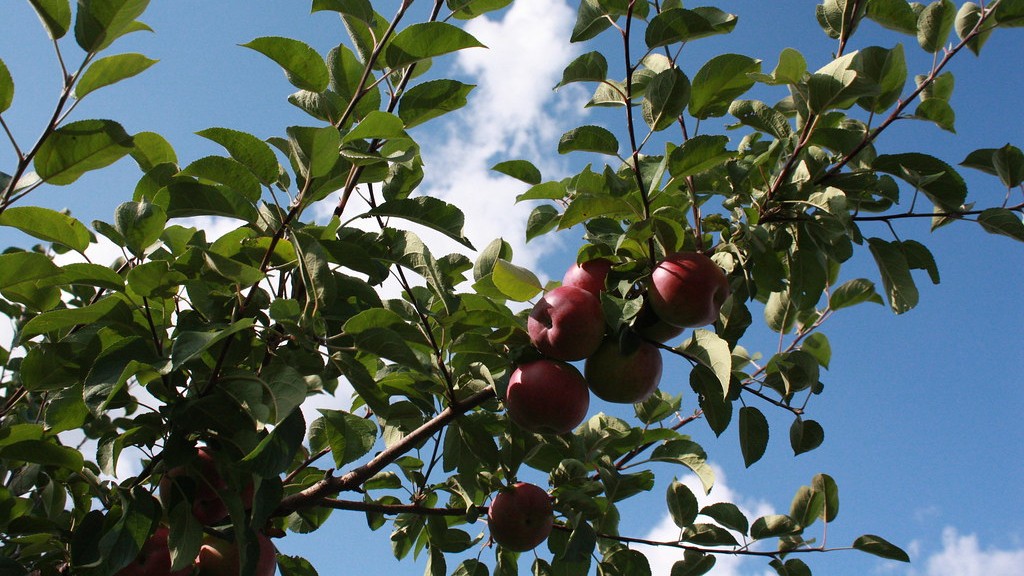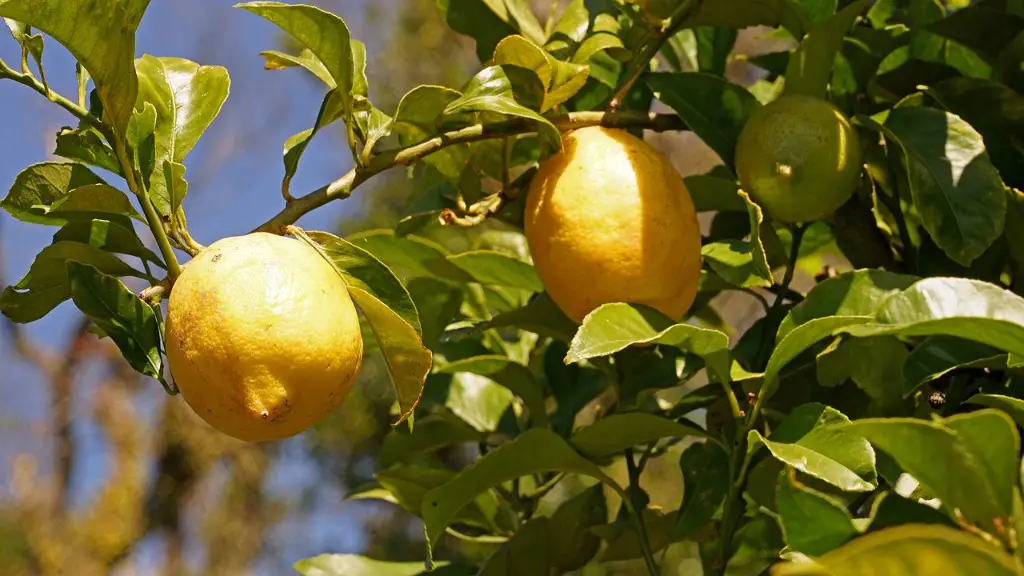Apple tree pruning is an essential part of any successful apple tree care program. Proper pruning helps maintain health and vigor, encourages fruit production, and improves the aesthetics of your tree. If left unpruned, an apple tree may become unhealthy, unproductive, and undesirable. Here’s how to prune an apple tree:
Step one is to remove all dead, diseased, and damaged branches. The best way to do this is to start at the bottom of the tree and work your way up. Look for branches with dried leaves or bark, or those that are discolored. Cut them off at their base with pruning shears, and dispose of them away from your tree.
Step two is to identify and remove crossed branches. Crossed branches can inhibit air and light from reaching other parts of the tree, which can result in a decrease in overall fruit production. Cut off any branches that are crisscrossing or rubbing against each other. This includes any V-shaped or U-shaped crotches. If the crotch appears to be sharp, try to make the cut in an outward direction so that light can get in better.
Step three is to prune out any sucker growth. Suckers are the water sprouts that come up at the base of the tree. These need to be removed in order to not interfere with the main structure of the tree. It is best to remove them with pruning shears as close to the tree as possible.
Step four is to prune any vertical branches. These are also known as watersprouts. These branches grow straight up and reduce the amount of overall fruit production, so it is best to prune them out. The best way to do this is to cut them back to just above where another branch is growing.
Finally, step five is to shape the tree. Remove any branches that are excessively long or slender, or any branches that are growing inwards or in awkward directions. You can also remove some of the older branches that have fewer blossoms and fruit. This will help open up the tree and allow light and air to reach the other parts of it.
Reasons to Prune an Apple Tree
The main reason to prune an apple tree is to encourage more healthy, abundant fruit production. Proper pruning helps to maintain an upright growth habit, increase air circulation, reduce disease, and reduce competition from other branches. Pruning will also help to shape the tree and keep it well-balanced and aesthetically pleasing.
Pruning an apple tree also helps to reduce the amount of maintenance needed. By pruning the branches, you can remove the need for thinning, shaping, and adjusting the tree. This can help save time, money, and energy.
Finally, pruning can stimulate new growth in the tree. By removing certain branches, you open up the tree and let in more light, resulting in more vigorous growth. This new growth can help create balance and more beauty in the tree.
Time to Prune an Apple Tree
The best time to prune an apple tree is in the early spring, just after the threat of frost has passed. The tree will still be dormant, meaning there will be less stress on it and less risk of disease. Pruning too late can stress the tree and lead to infection, so it is best to prune in the early spring.
When pruning an apple tree, always start with the dead, diseased, and damaged branches. This will help minimize the amount of pruning needed and help keep your tree healthy and vigorous. After dead material is pruned away, then you can proceed to prune out crossed branches, sucker growth, and watersprouts.
When pruning for shape, it is best to use pruning shears and not electric clippers. This will help keep the shape of the tree more organic and avoid any potential shock or damage to the tree. Always make the cuts in an outward direction, and never cut the branch flush with the trunk.
Tools and Safety when Pruning an Apple Tree
When pruning an apple tree, it is important to use the right tools and safety gear. Pruning shears, loppers, and a pole saw are the most common tools for pruning apple trees. You may also need a ladder to reach taller branches. Always wear protective glasses or goggles and gloves when pruning.
When using any of these tools, make sure that you know exactly how to use them and that you’re using them safely. Keeping the tools sharp is also important, as this will help reduce stress on the tree and will help make the job easier. If you are in doubt, it is best to seek the help of a professional.
It is also important to be prepared for unexpected surprises when pruning an apple tree. Always make sure that you know where your hands are so that you can get away if a branch snaps and falls. And, most importantly, never stand directly underneath the tree while pruning.
The Benefits of Pruning an Apple Tree
Pruning an apple tree brings with it many benefits. It can help accelerate fruit production, increase overall health, reduce the need for maintenance, and keep the tree aesthetically pleasing. It can also help stimulate new growth and open up the tree to more light, air, and moisture.
It is important to remember that pruning an apple tree is not a one-time event. It needs to be done regularly, typically every spring. While it may seem daunting at first, a little knowledge and practice can go a long way and help ensure that your tree stays healthy, productive, and beautiful for years to come.
Different Pruning Methods for Apple Trees
When pruning an apple tree, there are three different methods: thinning, hedging, and tipping. Each method has its own advantages and disadvantages, and they all need to be done at the right time and with the proper tools.
Thinning is when you remove competing branches to create a more open canopy of overlapping branches. This helps reduce competition and improve air circulation. Thin young trees enough to help them develop proper shape, but don’t overdo it.
Hedging is when you prune the branches of a tree to keep it in a compact shape. This is best done with electric clippers or shears, and it should be done regularly during the tree’s growing season. Hedging helps keep the tree in a controlled shape and keeps the fruits from overreaching onto the ground.
Tipping is when you prune the tips off of the branches. This helps reduce the length of the branches and encourages fruit production. It also helps prevent branches from crowding each other out and keeps the tree looking neat.
Conclusion
Pruning an apple tree is an effective way to ensure healthy, abundant fruit production, reduce the need for maintenance, and keep the tree in a neat and aesthetically pleasing shape. It is important to know the desired shape and size of the tree, which pruning method is best for your particular tree, and when to prune. With a little knowledge and practice, you can prune your apple tree effectively and make sure it produces the best fruit for years to come.
